#romani culture
Text

Okay, I will try to explain this topic as well as I can. I will preface this with the fact this comes from personal experiences, and that they may not apply for everyone who has ties to this culture, but let's get to it:
What's the issue with Fortune tellers / "Exotic" circus performers, sexualized belly dancers and other forms of orientalism/Romani depictions?
So, as someone in the TTRPG world (specifically, the DnD community), this sort of trope is seen quite a lot. From the portrayal of Vistani (which has been tried to be fixed, but not... too well), to player characters in home games, as well as popular canon characters and podcasts, it's got quite normalized. Most of these tropes are based on Romani, which is a widespread ethnicity present all across the globe. Now, it feels almost strange to call it orientalism, given how Romani have been in Europe since the Middle Ages, even though they do have roots outside of Europe.
Romani face one of the biggest diaspora in the world: You will find Roma people under many names in very different countries, with cultures and traditions that can clash heavily. Their numbers can range from few hundred in some countries, to over a million in those they have a biggest presence. My own experience is tied to Spanish Roma, known as Gitanos, which is where my mother's side family comes from.
Gitanos are a widespread group, although they're most numerous in the southern part of Spain, Andalusia, where their presence has shaped the culture. Flamenco is thought to have been born from Gitano culture, and it has been adopted as a staple of the Andalusian identity, and the whole of Spain. Gitanos are hard to understand as their own ethnicity in Spain: There's been centuries of Gitanos and Spanish people mixing, and the average Andalusian is quite tan to start with (given Muslim presence there has also been pretty firm). It means it can be hard to "clock" a Spanish Romani person from a non-Romani one. It means you can find Romani people most would consider white, at least by Spanish standards. Most of the discrimination Gitanos face is cultural (and the whole ordeal can be a bit harder to explain from a more US-centric view).
Now, even when Gitanos have influenced Spanish culture a lot, they still face plenty of discrimination. They are one of the most marginalized groups out there. Laws have discriminated against them for centuries, on and off, which have put them in poverty. And poverty often develops into criminality, which has only seeded the idea that Gitanos are criminals, "lowlies", the bottom of society, "uncivilized", etc. Now, here comes a bit of my own experience with this.
My entire family is Andalusian, but both sides moved from there (the south) to Catalonia (north-east) in order to find a job during the Francoist (fascist) dictatorship. I won't get much into the specifics of the Catalan vs Andalusian beef because that's a bit of a massive topic too, but the important thing here is: My mother's side is Romani. My grandma faced some horrifying forms of discrimination, including the theft of her first child during the fascist dictatorship, which was taken from her by nuns (who ran hospitals at the time) to be placed into a "proper" family. (This is something that happened repeatedly at some hospitals during these times).
Now, she had two other children: My mother and my aunt. My aunt remained closely knit to Romani culture, and took part in it, which included marrying a Romani guy. She always did her best efforts to be part of it. I know she was into some culturally-related dances, which included some forms of bellydancing (which is also partially tied to Roma culture). But my mother decided she'd rather cut ties with her culture and become "civilised", by abandoning said culture.
This isn't too uncommon for Gitanos, to be honest. I've met a few people who come from similar backgrounds through my life. One of them was in university, where a fellow classmate gave an oral exposition about how his family had done a great job at "becoming civilised" by cutting ties with their own Roma roots. My university was a fairly progressive space, but no one batted an eye at that: The sheer hatred of Roma culture runs so deep even people who normally abhor racism and xenophobia consider Gitanos to be worth the hate.
There's a social pressure to do that, too. Everyone "knows" Gitano are criminals. I can't really even begin to explain how deeply does this sort of discrimination run. Roma are amongst the most hated minority groups in all of Europe (as well as most of the world). You will find that even in very leftist circles. People will try to erase the fact Roma have their own culture, and just make the world equal to "criminal", call them gy***** (which is a slur, btw), and detach them from being an actual culturally (and often racially) distinct group.
Now, this is only empowered by how media has taken our culture (it is almost hard for me to call it "our", given how much my mother ensured to take that away) and made it into a bad trope. Growing up, I was told my aunt was a sexual deviant who partook in indecent dances. Bellydancing is often seen as something very sexual (Wasn't, in origin), very unfitting. In media, bellydancers veer on the side of being a f*tish, and the common trope is the "bellydancer who seduces people in power for their own benefit". There's also the whole idea of shady fortune tellers and other magical tropes, that sort of weird mysticism that falls rapidly into orientalism. The idea that Roma will hex you, curse you, place an "Evil Eye" on you. And also the idea of travelling circus, people who perform in them being again full of that alluring exoticism, but beware! For they will enchant you, steal from you and run some massive criminal schemes on the way.
Now, when every tie a culture has on media is portrayed in a negative light, it's much harder for that culture to recover any sort of respect from the general populace. And that includes even people who are part of said culture, or people who have been removed from it. It has taken me so many years to unlearn a lot of these biases and realize where it has come from, and now I'm far too distant and far away from my grandmother to actually ever significantly connect to my heritage.
I've had the opportunity to witness what Romani culture is actually about, as I used to live with my grandmother during summers. A lot of the "mysticism" she took part of was actually about wards and protection. A lot of them were actually medicinal in nature, even if others were more superstitious. Red thread in the forehead for sickness and protection to curses, parfums (which contained alcohol or other antiseptics) on wounds, that stuff. My aunt was never a "sexual" deviant, she was keen on recovering and partaking on traditions from a culture that is slowly disappearing. The entire "promiscuous" idea is bullshit, Gitanos place a massive amount of power to marriage and loyalty. I had the luck to witness my cousin's marriage, which was a festivity like none other I had seen in my life, a colorful spectacle full of the most delightful attires, and my mother was whining the entire time over about how it was all an "uncivilised circus".
Now, this is why representation in media is key. Roma culture is broken into a thousand pieces and lost with every passing day. When someone decides to write an ambulant circus performer/fortune teller clad in exotic clothes full of golden jewellery, writes them as a criminal and makes the entire thing extremely sexual, they are feeding into the negative stereotypes about Roma.
Now, there's a lot of people who aren't even aware what culture does that trope even actually come from. I've seen people draw characters clad in Romani attires (often in, uh, rather pin-up or sexual contexts) and claim they're inspired by "x piece of media", where the trope is portrayed in the first place. I literally saw someone make a drawing in that way and call it "inspired by x (non-Roma) artist" instead of acknowledging where does all that come from.
I'm not asking people to not portray Roma people in media. Far from that. I just wish representation was better. Good representation is key towards making a culture seen in a more positive light, and teaching other peoples about it, and making people from said culture resonate with it. The very few times I've seen positive representations of Roma I've felt a bit of that connection with something that was taken from me. I want people to do a bit of research before giving a try to a Roma-coded character. Make an effort to not make Roma always the morally dubious fortune teller, the exotic alluring circus traveller, the bellydancer seductress. It's hard for Romani to produce widespread mainstream media because of how impoverished most communities are (because of the systematic discrimination Roma face all around the world), so the least non-Roma people can do is to be kind when they use their voice to talk or represent us.
I know this is a massive post, and I'm tagging it as "long post" for that reason, but I hope it is helpful for people. Feel free to ask or add your own experience if this is something that resonates with you too. Ask away if you want. I've been wanting to tell a bit my own personal experience, as this has always been a hard spot for me, and even if just a handful of people read this and understand what is this all about, I think it will have been worth it.
#roma#romani#gitano#romani culture#representation#culture#folk#tradition#people#spain#spanish#romani in media#bellydancer#bellydancing#fortune teller#dnd#vistani#long post
2K notes
·
View notes
Text
Happy International Romani Day! (April 8th)
Wishing all the Romani people on this site a good day, and a thank you for how much your cultures have contributed to the world.
You are more than the stereotypes and harmful prejudices that people try to apply to you.
You are loved and appreciated, and you deserve the world.
❤️
#tumblr dashboard#important#international Romani day#romani people#free palestine#romani culture#romani history#culture#dashboard unfucker#you’re loved
161 notes
·
View notes
Text



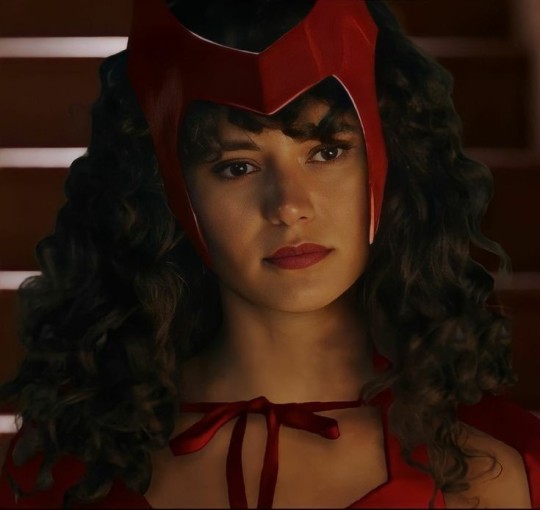
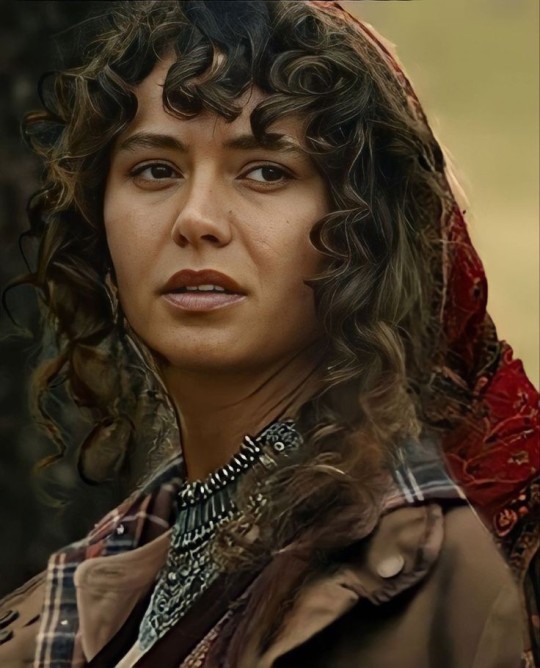


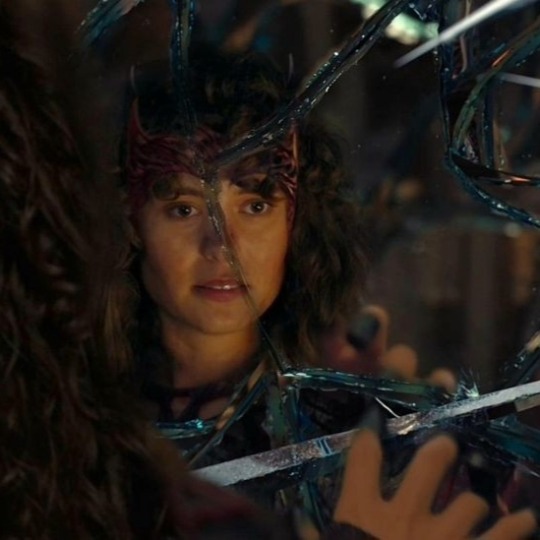

MY wanda 2.0
#HER.#wanda maximoff#marvel fancast#mcu fancast#wanda maximov#romani wanda#romani wanda maximoff#romani culture#marvel mcu#mcu x reader#wanda x you#wanda x reader#wanda maximommy#wanda maximilf#wanda maximoff x reader#wandanat#wandavision
40 notes
·
View notes
Text
This image of an 1800’s “vardo” has been circulating on Facebook….

Now this is the real image:
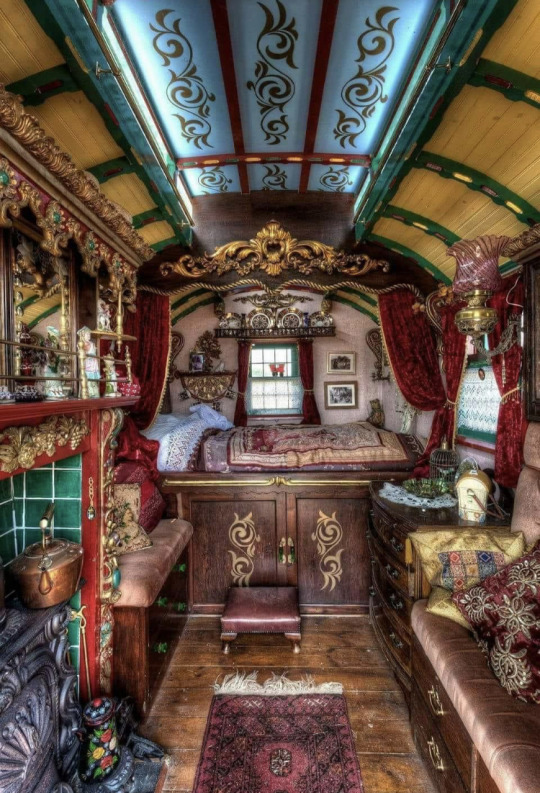
We DO NOT need to photoshop traditional vardos to make them more appeasing, both are gorgeous, historical, and hold so many memories and weight.
Let’s stop trying to make Romani culture into an ancient aesthetic and accept it for what it is 👏 !
#romani history#romani#romani people#romani culture#romani vardo#romani representation#international roma heritage month#vardo#izabesworld
121 notes
·
View notes
Text

youtube
#romani people#romani history#romani culture#holocaust#history#world history#history posting#video essay#social justice#human rights#spreading awareness#gypsy#ww2 history#ww2#history is important#history and culture#history tumblr#history side of tumblr#history matters#world war 2#world war ii#world war two#tumblr recommendations#recommend#recommendation#youtube#youtube content#youtube recommendations#youtube video#video recommendation
24 notes
·
View notes
Note
What are the different clothes of gypsy women?
I'm as far as possible from an expert on Romani dress, but Wikipedia has information about it.
Romani women's clothing vary between different countries and different tribes, but there are commonalities among them. Traditionally they wear skirts that reach below the knees, because their culture's laws of "marime" (ritual purity) make the lower body taboo. They also traditionally avoid wearing pants. Both of these rules have been relaxed in modern times, but productions of Carmen that want to be halfway historically accurate should obviously avoid having Carmen do too much leg-flaunting, or dressing her in men's clothes in the mountains in Act III. (Too many productions do either one, the other, or both.)
Young woman traditionally wear bright colors, while older women wear darker colors, and as in mainstream Western culture, black is a mourning color.
Married women wear headscarves over their hair.
Both as a status symbol and as an easy way to carry money from place to place, women also traditionally wear prominent gold jewelry and gold coins sewn onto their headscarves.
14 notes
·
View notes
Text
Russian romani dancer Angela Lekareva performing .
#took an online class with her love her style#russian romani dance#i miss my dance classes#romani culture#Russian Romani
57 notes
·
View notes
Text
🙌🏽💯
#romani culture#romani rights#opre romani#romani#roma#romany gypsy#romany#polish tumblr#romani feminism#gypsy woman#gypsy#Spotify
6 notes
·
View notes
Note
ok this is really out of the blue but i have a character im making who is Rromani-Haitian Creole and i saw you mention that you're Romani-Creole so i wanted to maybe establish a contact 'cause im trying to educate myself about the cultures i include in my writing. (im gadje and mostly white)
that's not the only reason im sending an ask, i looked through your blog and you seem really interesting as a person too. (does that sound too desperate? i mean it though, i forgot why i was on your blog just scrolling through lol)
of course i understand that one person isn't an end-all, be-all source but i didn't really expect to run into anyone with the same ethnic background as my character this soon
gah im sorry this must be a weird ask to receive you probably just want to be left alone instead of annoyed with questions
Fare thee well
Hey! Sorry this got lost in my inbox! I think it’s awesome you’re writing a character like that!!! I’m definitely not an arbiter for Romani-Creole cross culture, but I could maybe point you in the right direction. In the interest of clarity, I’m not Haitian Creole, and instead Louisiana/New Orleans Creole, and don’t have much experience with Haitian Creole culture.
In my own experience, the cultures are pretty separate, although I guess that’s to be expected of a largely American culture vs an Eastern European/North Indian one. There are similarities in the way that both are kind of a melting pot of sorts, with Creoles having a culture that is largely a mixture of French, Spanish, and many African cultures, and Romani people having traditions of both their own cultures and those of the areas they’ve settled in. Languages are also often a patois of regional and independent ones as well.
Romani culture is also not monolithic, and there are several distinct cultures within it as well. Kalderash Roma are going to be different from Polska Roma, and so on.
All this to say, each culture has a lot of traditions and variations, so there’s some freedom if you’re creating a fictionalized version based on similar themes, but depending on if you want to really go into the minutiae of each culture, there’s admittedly a lot of research to do there.
Let me know if I can help!
3 notes
·
View notes
Text
The fact that Suli people are inspired by Romani culture is something that makes me feel so giddy.
22 notes
·
View notes
Text
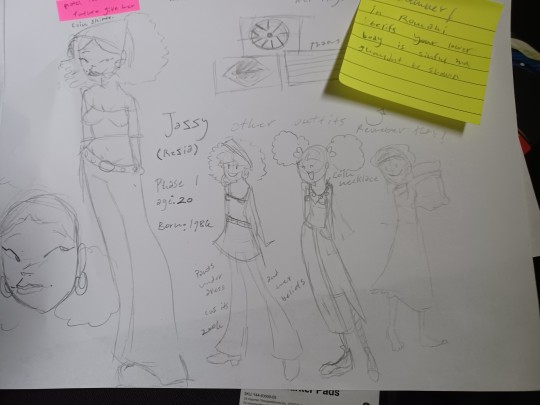
Uhhhh trans lady gorillaz oc in phase 1 ummm might change her because of the thing I'm doing to make her transition over phases! So might remove her tibbys, give her less access to girly clothes and more anxious uhhh but she's afro indigenous and Romani! I made sure to cover up her lower half because in Romani beliefs the lower body is sinful.
#murdoc#2d gorillaz#noodle gorillaz#gorilaz#murdoc niccals#cyborg noodle#russel hobbs#stuart pot#russel#my oc art#gorillaz oc#romani culture
4 notes
·
View notes
Text
Doing research regarding traditional Romani clothing, and I was wondering, could someone please verify if it's true that headscarves are most often worn by married women, and not unmarried women? I would like to remain respectful in my character design and have some elements of Romani culture represented by this character, make sure that any elements I reference wouldn't look stereotypical or derogatory.
#roma#romani culture#while the charcater in question exists in a fictionalized world#they are undeniably romani and I want to treat that identify with respect#i would love to give this charcater a headscarf but if it would feel very strange or out of place I won't.#currently studying historical painting and photos from various sources.#Also worth noting: They are not the only romani character! there are multiple. :)
16 notes
·
View notes
Text
TL;DR: looking for critiques on what I’ve currently developed for and resources on Romani culture for further development of my Vistani replacement culture in a Curse of Strahd-inspired game
Ok, so a little background on my particular version of Ravenloft.
This universe was a high fantasy one of the fairly typically belief powered magic model. The problem with that, however, was that when a period of massive wars, famines, and other crises made the world’s fear levels hit an all-time high, the world was taken over by the Dread Powers, mighty and evil entities made of human fear. The only lands that survived were those that had been “chosen” via a powerful person in them making a bond with one of the Dread Powers, turning each chosen land into a Domain of Dread perfectly designed to maximize production of the associated fear (think post-Change Magnus Archives, but more long-term livable). The rest of the world was utterly obliterated, and covered in a thick, magical mist.
One of the ethnic groups in this world is the ahnwahrd (ahn essentially means people in their own tongue, and is the term for the wider ethnic group; wahrd refers to the specific type of covered wagons used by the ahnwahrd, and is itself fantasy-etymology related to the word “ward,” referring to their protection from the elements). Pre-change, they were essentially your average nomadic group, and they just happened to have a higher prevalence of a rare genetic disorder than other ethnic groups—like how some real groups have a higher prevalence of lactose intolerance, down syndrome, etc. This specific genetic disorder severely impairs the function of the amygdala, preventing those with it from feeling fear (for those interested, it’s very roughly inspired by the very rare real Urbach-Wiethe disease, though it functions a bit differently). This condition is known as being “fearless,” and frankly wasn’t a huge deal for most of history.
Then the Dread Powers took over, and the fearless were put in a strange position. Since they couldn’t feel fear, they were immune to many of the Dread Powers’ magics, and undetectable by them. This meant they were, in theory, able to travel through domains of dread freely (although they can’t control which ones they go to when mistwalking). However, the majority of ahnwahrd aren’t fearless, and thus if they traveled across domains, they would have to leave their loved ones behind—essentially impossible for a people with such a strong value of community and family. Many of the fearless ahnwahrd thus elected to stay with their trapped loved ones, and simply move within the domain they were trapped in, but others decided to band together and continue traveling across lands. (Note: Not all mist-traveling ahnwahrd are ethnic ahnwahrd—if proven trustworthy, they will accept members of other ethnic groups who also have the fearless mutation).
Over the centuries, they have determined that basically the main reason their immunity to the dread powers is tolerated is that the dread powers don’t notice they exist, because they don’t stay in one place long enough, are a small population (although over the centuries, due to mostly having children with other fearless or with carriers, their population has grown fairly significantly from pre-transformation numbers), and don’t tend to make waves.
They recognize that their continued existence and comparative freedom relative to the rest of the people of the domains—including trapped ahnwahrd—is due to staying outside of the dread powers’ notice, and so they’ve basically enacted informal rules to continue doing that on the whole, although occasionally individual people will spurn those rules. While the fearless ahnwahrd obviously aren’t afraid of death, they still want to live, and thus are able to be intellectually cautious. This caution is drilled into them from a young age, and sometimes results in stressed parents due to the clash between the need for safety and the strong ahnwahrd belief in the importance of children being given chances to explore and be able to figure things out for themselves.
Other aspects of their culture that I’ve worked out so far include a belief in the threads of fate—a belief that, essentially, everything is predetermined, but by cause and effect rather than a divinity, in a sort of Laplace’s Demon kind of way, and that it is impossible to understand all these threads, but that the best diviners can try to see a few. Ahnwahrd have roughly the same proportion of diviners as other ethnic groups (ie incredibly rare), but they are unique in their importance, as fearless diviners can predict where mist-traveling groups will end up—an invaluable ability.
Additionally, they are matrilineal, and somewhat gerontocratic, although the latter is more out of respect for knowledge than any formal requirements (they do have a government system, I just haven’t quite worked it out yet).
If you didn’t guess, the ahnwahrd are essentially my version of the Vistani, and as a result of that, I’ve had—and still have—to do a lot of work avoiding landmines as I develop them and their culture. I’d like to have a working knowledge of Romani culture to do so, but misinformation about it is plentiful, so I was hoping for resource recommendations and/or critiques on what I’ve done so far.
Any help is appreciated, although it’s totally fine if you don’t want to give any.
#romani#rromani#romani culture#Vistani#Curse of strahd#dungeons and dragons#dnd#rromani culture#Resource requests#Sorry for all the tags
4 notes
·
View notes
Text
Hey guys, I know almost nothing about Romani culture and people and I would like to change that but I don’t know how. I know that centuries of discrimination against the Romani has made most depictions of them dubious at best and I don’t know where to find good and accurate information. Can anyone help me? Thank you!
#I’m not entirely sure how to tag this#if you have suggestions please let me know#Romani#Roma#Roma heritage#romani culture#culture#learning#sources needed#eastern europe#romania#Romani heritage#romani history#Roma history#romani people
1 note
·
View note
Text

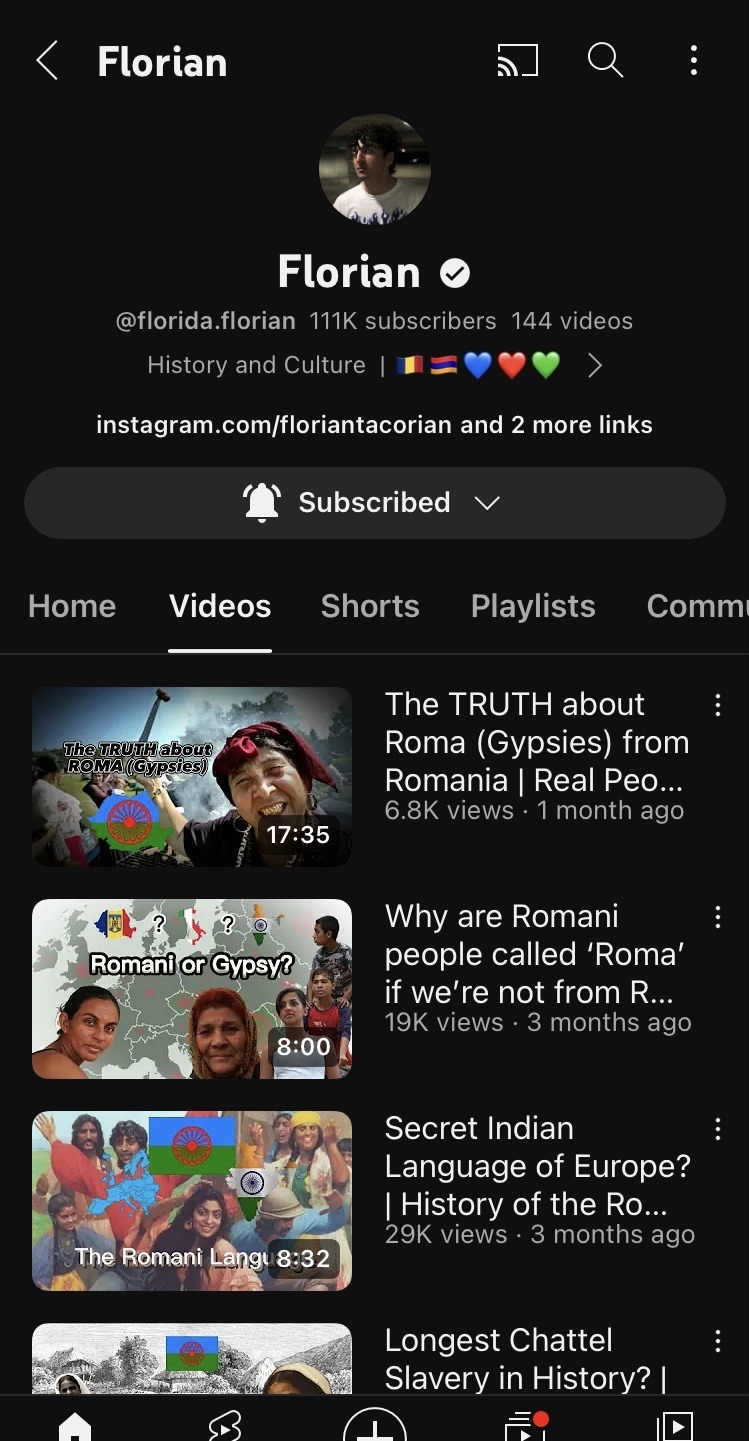
Here’s my personal recommendation of a YouTube channel to check out:
#romani people#romani history#romani representation#Romani culture#tumblr recommendations#recommend#recommendation#youtube#youtube content#youtube recommendations#youtube video#video recommendation#youtube link#youtube channel#history#human history#culture#people of color#world history#humanity#political posting#spreading awareness#support YouTube creators#support#youtuber#human rights#leftist#leftism#leftist politics#left wing
14 notes
·
View notes
Text
It's so ironic of me to have read fairytales as a kid written by white people about gypsies (I'm so sorry for using the word it's just for context) and how they were always stereotyped as kidnappers or just nomads in general and actually getting me to think that they "in fact" were that way (power of anecdotal manipulation amirit-), while being an Indian (cuz the g-word used to be a slur for Romani people, who were a cluster of Indo-Aryan ethnic groups originating from India itself and later migrating to Europe around 700 years ago).
1 note
·
View note